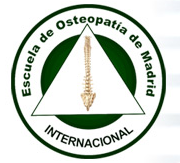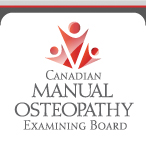Study On Mulligan’s Manual Therapy Treatment Dosage Between Loading And Movement Disorders Of Cervical Spine.
According to Mansi Mittal and team from Department of Therapies & Health Sciences, Faridabad Institute of Technology,
 Faridabad, Haryana, patients with neck pain constitute approximately 25% of all patients encountered in outpatient physical therapy practice and in about 90% cases it is diagnosed as mechanical neck pain. Once serious medical pathology and specific diseases have been excluded, the anatomical source of symptoms is difficult to establish and consequently the term cervical pain of unknown origin (CPUO) or mechanical neck pain or non-specific neck pain have been recommended to this patient group. The most recent classification, given by Clair et al (2006) classifies patients with CPUO into Loading disorders and Movement disorders, according to their dominant impairment of spinal function.
Faridabad, Haryana, patients with neck pain constitute approximately 25% of all patients encountered in outpatient physical therapy practice and in about 90% cases it is diagnosed as mechanical neck pain. Once serious medical pathology and specific diseases have been excluded, the anatomical source of symptoms is difficult to establish and consequently the term cervical pain of unknown origin (CPUO) or mechanical neck pain or non-specific neck pain have been recommended to this patient group. The most recent classification, given by Clair et al (2006) classifies patients with CPUO into Loading disorders and Movement disorders, according to their dominant impairment of spinal function.
Mulligan’s manual therapy techniques, developed by Brain Mulligan are widely used for treating spinal problems of mechanical onset. However the authors point out that there is a lack of conclusive information on guiding factors evaluating the dosimetery of Mulligan’s manual therapy in loading and movement disorders of cervical spine.
Authors states that the present study is done to understand the effect of Mulligan’s manual strategy combined with the remedial exercises on loading and movement disorders of cervical spine and comparing the two in terms of number of treatment sessions required to achieve significant improvement as well as response to treatment, hence further evaluating the prognostic significance of classification.
For the study, 30 patients with sub-acute mechanical neck pain were classified into two groups, loading disorders and movement disorders according to their dominant impairment of spinal function. Study was carried out as a pre test - post test experimental design. Standardized treatment regime including Mulligan’s manual therapy along with remedial exercise was prescribed to both the groups. Both the groups received a standardized intervention including Mulligan’s manual therapy (SNAGS &/ or NAGS); Remedial exercises (postural correction exercises, neck retraction exercises, self-stretching for tight postural neck muscles, and strengthening exercises for weak phasic neck and scapular muscles) and Hot packs for 10-15 min (if required). For SNAGS, 6 – 10 repetition per set X 2- 3 sets were given over most painful segment in direction of movement impairment along the respective facet plane. For NAGS, 2-3 oscillations per second X < 6sec X 2-3 sets with 20 sec rest in between, were given along facet plane on most painful/ hypo mobile segment. Snags were preferred if patient had ‘catch pain’ during movement whereas NAGS were preferred if patient presented with high SIN / multiple levels of involvement.
Patients were considered for discharge when they rated their pain intensity ≤ 1 for 3 consecutive treatment sessions. Primary outcome was difference in the minimum number of treatment sessions required to achieve a significant improvement between the groups.
Authors used the Kaplan Meier curve which demonstrated that all the patients with loading disorders showed probability of getting discharged by 7th treatment session as compared to 10th treatment session in movement group. It was also observed by the authors that both the groups achieved a significant improvement in neck pain and disability following intervention. It is concluded that this relatively simple method of classification of patients with neck pain carries prognostic significance and appears to be a useful indicator of treatment dosing required to achieve a significant response to specifically standardized physical therapy treatment.
Authors: Mansi Mittal, Unaise A. Hameed, Amit Chaudhary, Ruchika, Department of Therapies & Health Sciences, Faridabad Institute of Technology, Faridabad, Haryana.
Source: IJPOT, April-June 2011, Vol: 5,No:2.








 1:02
1:02
 Daniel Enriquez de Guevara
Daniel Enriquez de Guevara




























.jpg)






















0 comentarios :
Publicar un comentario